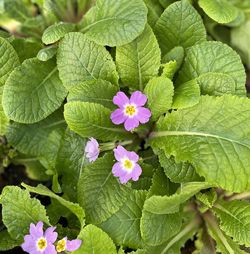Lewis’ Mock Orange
Philadelphus
Mock Orange
First introduced to Europe along with Lilacs by Ambassador Ogier Ghiselin de Busbecq in 1562, this timeless and easy-to-grow hollow-branched shrub was used by the Turks to make pipes. Its Latin name means “brotherly love” and its orange blossom-like fragrance has enhanced teas, perfumes, and almost certainly, many friends’ walks in the garden.
Collected during Lewis and Clark’s 1806 expedition, this delightful native’s habitat extends from British Columbia to California and east to Idaho and Montana. A bonanza of clustered 4-petaled, 2 in. wide pure white blossoms debuts dense radiant yellow stamens and a fresh fruity citrus scent, enticing bees, butterflies, hummingbirds and gardeners. Cloaked in paired ovate bright green leaves with prominent veins and paler undersides, numerous strong erect arching stems forge a large loosely-branched vase-like silhouette. Lewis’ Mock Orange can be featured by a pathway and as an amenable deciduous specimen in a mixed border, native planting or informal hedge, where it affords yellow fall color, develops flaky gray bark and withstands full sun, partial shade plus periodic dry conditions.
Blooms June–July
Size: 5' 0" – 8' 0" high x 5' 0" wide.
Hardy to zone 4.
Please fill out our Registration Form to receive news of updates to the web site, availability of new plants, give us your feedback, and to be on the mailing list to receive future printed catalogs.











